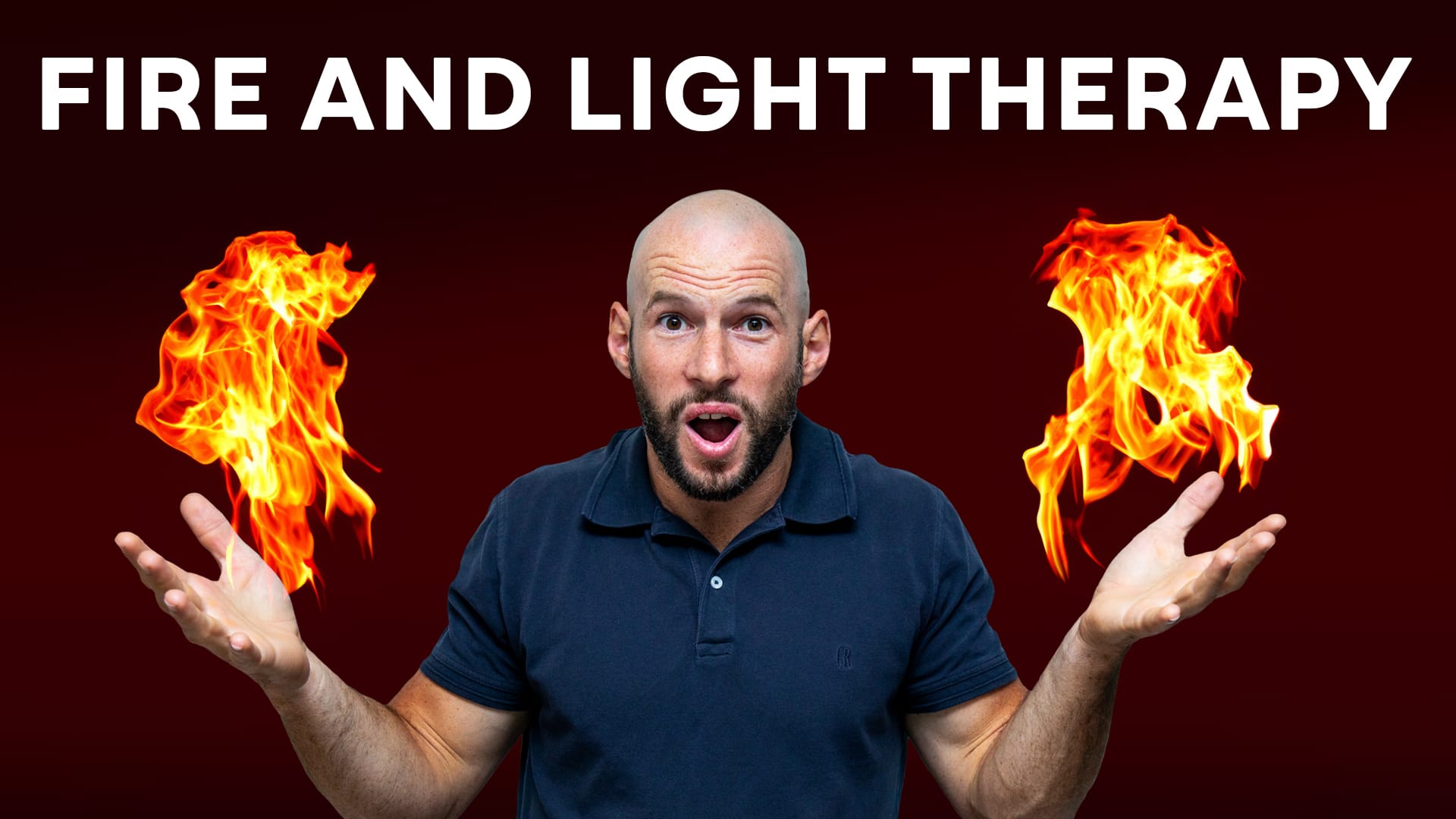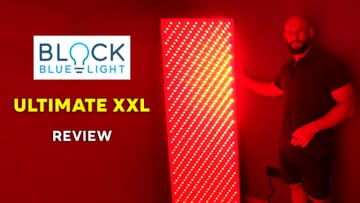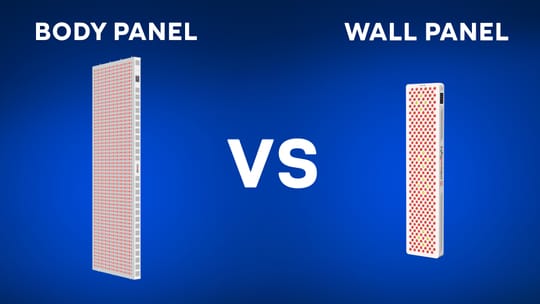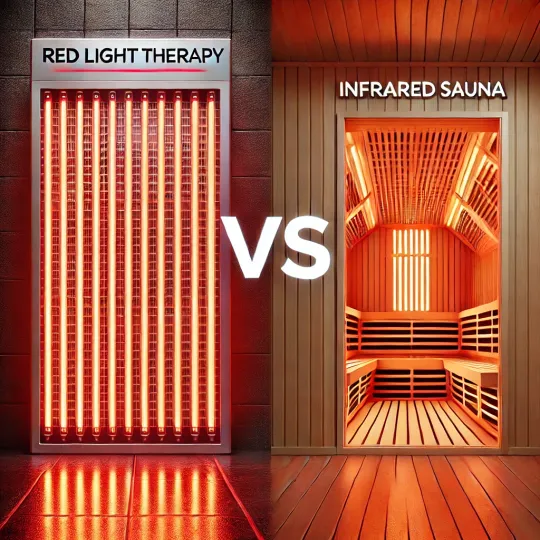Red light therapy has been a staple in my wellness routine for years. But I often hear the question: Do you need one of those fancy LED panels or lasers? Couldn't you go outside or sit by a fire to get the same benefits?
With these thoughts in mind, I decided to test it. Using a spectrometer—a device that measures light—I determined whether a fire emits enough therapeutic red light to compete with modern red light therapy devices.
The results were both surprising and a little disappointing.
The Setup: Testing the Fire's Red Light Potential
To keep things simple, I tested the light emitted by a roaring fire under two conditions: with the glass door closed and then with it open. I aimed to measure the light's intensity and spectrum, particularly in the therapeutic red and near-infrared (NIR) ranges. While I aimed to stay about 6 to 8 inches from the fire, it was intensely hot, so my distance may have varied slightly. Still, the results provide a clear picture of what's going on.
Testing Through the Glass Door
The first test involved keeping the fire's glass door closed. I recorded light measurements with my spectrometer at a distance of about 6 to 8 inches. Here's what I found:
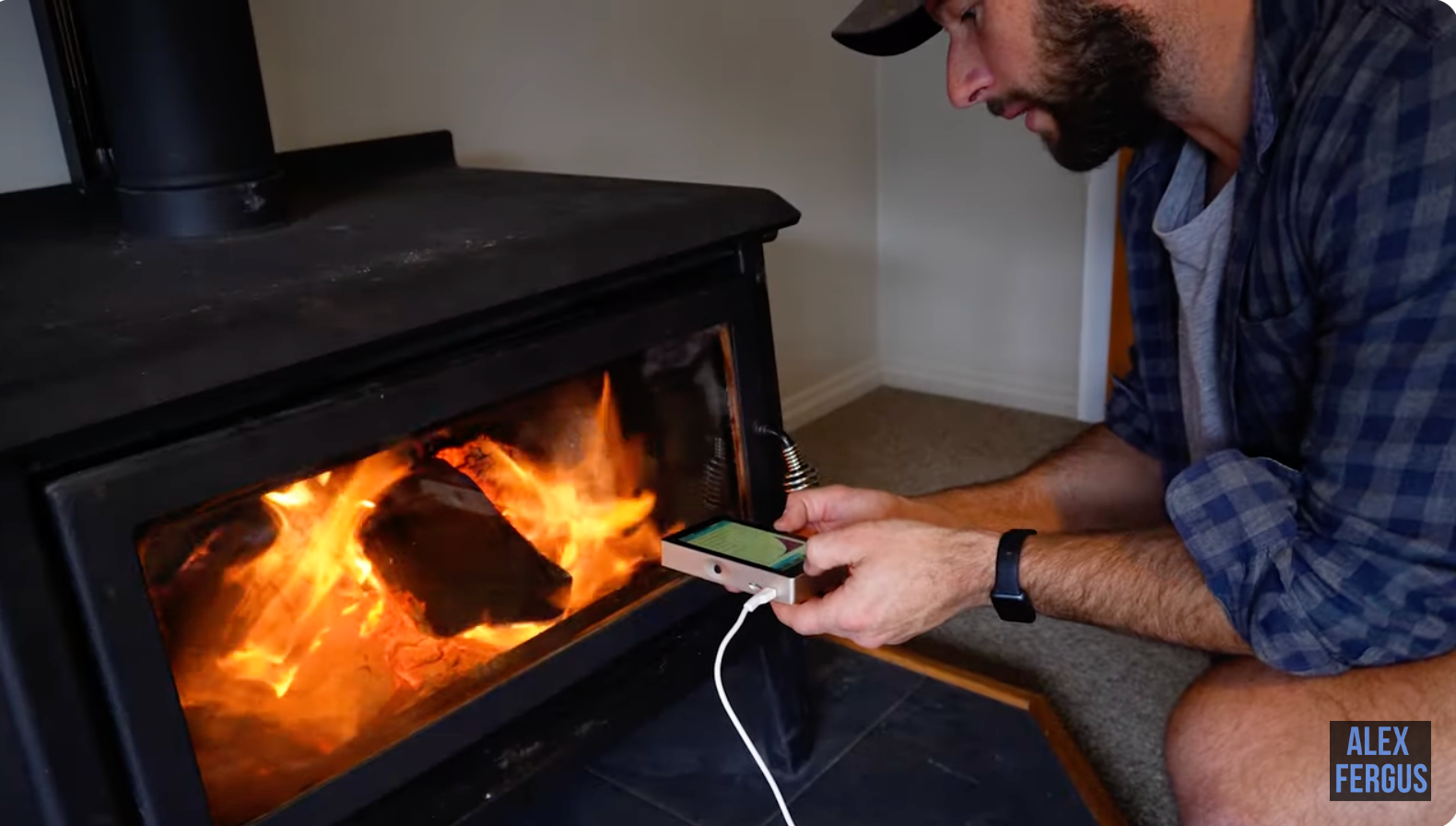
1) Light Intensity: The total irradiance—or light energy—measured only 0.12 milliwatts per centimeter squared (mW/cm²). To put that into perspective, most red light therapy panels deliver 40 to 60 mW/cm² at a similar distance.
Even low-dose photobiomodulation research often works with 5 to 10mW/cm², which is still far higher than the fire produced through the glass.
2) Red Light Spectrum: The red light component (around 660 nanometers) was negligible, accounting for only about 5% of the total light emitted. Most of the energy fell into the NIR range (900 to 1000 nanometers), which, while beneficial for specific applications, doesn't offer the same therapeutic properties as targeted red light wavelengths.
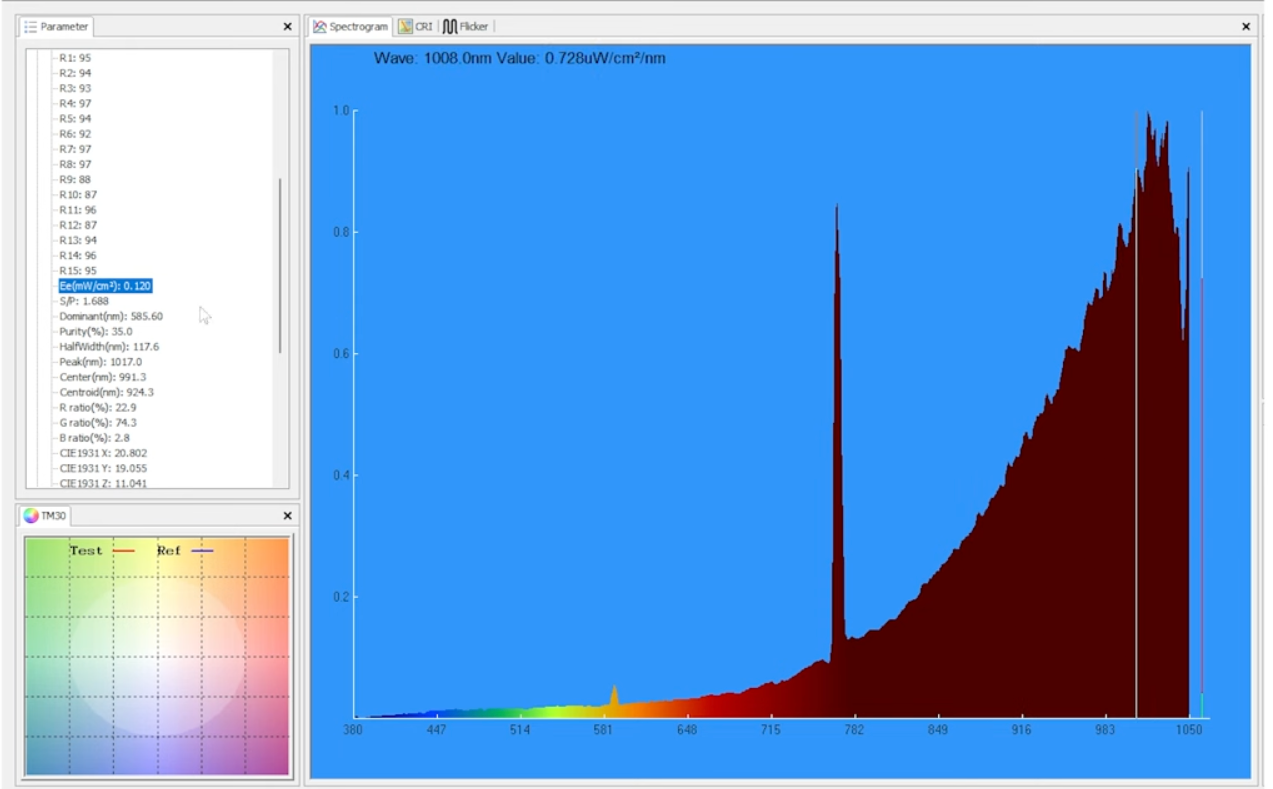
3) Strange Spikes: My spectrometer detected unusual peaks at 590 and 770 nanometers. While I'm not entirely sure why these appeared, they could be anomalies with the device or quirks of the fire's light emission. If anyone has insights into this, I'd love to hear from you!
Testing With the Glass Door Open
Opening the glass door made a noticeable difference. At the same distance of 6 to 8 inches, the light intensity increased dramatically, roughly eight times higher than with the glass closed. However, even with this boost, the irradiance fell short of therapeutic levels, just under 1 mW/cm².
While the open-door scenario delivered a broader spectrum of light, it came with a significant downside: the heat was overwhelming.
I could only stand this close to the fire for a few seconds, and even my spectrometer felt at risk of overheating. If you're considering using fire as a red light source for a sore wrist, you'd have to endure this intense heat for an impractically long time to see any therapeutic effect. Simply put, it's not worth it.
The Reality of Fire as a Red Light Source
After running these tests, here's what I've concluded:
- Low Light Intensity: Despite the fire's heat and brightness, its red and NIR light intensity is far too low to be considered therapeutic. The highest reading—less than 1 mW/cm²—pales compared to the 40 to 60 mW/cm² offered by red light therapy panels.
- Spectrum Limitations: While fire emits some red and NIR light, most of its energy is in the mid and far-infrared range, which is absorbed by water molecules and felt as heat. These wavelengths don't penetrate the body deeply enough to deliver the same benefits as targeted photobiomodulation devices.
- Heat Challenges: The fire's intense heat makes sitting close enough to receive any potential benefits from red light impractical. Staying at a more comfortable distance, like 24 inches, results in a massive drop-off in light intensity, rendering any therapeutic effects virtually non-existent.
Why Red Light Therapy Devices Are Worth It
A fire can't compete with a dedicated red light therapy device. While fires may offer relaxing warmth and ambiance, their light intensity and spectrum are insufficient for photobiomodulation.
This explains why people invest in high-quality LED panels and lasers: these devices are designed to deliver precise wavelengths at therapeutic doses, ensuring maximum benefits.
If you're looking for a more natural alternative to LED panels, hybrid options are worth exploring. For instance, my interview with Brian Richards from Sauna Space delves into his products, which combine red light therapy with sauna benefits for a holistic approach.
Unfortunately, it doesn't stack up if you hope to replace a red light device with a cozy fireplace.
My review of RLT and Sauna combined with Sauna Space Photon
Final Thoughts
While it might be tempting to think a fire's natural glow can mimic the effects of modern red light therapy, my experiment shows otherwise. Fires are better suited for relaxation, warmth, and ambiance than for delivering therapeutic light. So, if you're serious about harnessing the benefits of red and NIR light, invest in a purpose-built red light therapy device.
You May Like These Videos:
🔴 The BEST Valued Red Light Therapy Panel 2024! MUST-SEE
🔴 The BEST Red Light Panels For Minimizing EMF Exposure!
🔴 Best Red Light Therapy Body Panels 2024: HUGE Comparison!
🔴 The BEST Portable Red Light Device: ULTIMATE Battle!
Alex's Bio
This blog post was written by Alex Fergus. Alex is a ISSN Sports Nutrition Specialist, Fitness Professional and certified Superhuman Coach who continues to expand his knowledge base and help people across the world with their health and wellness. Alex is recognized as the National Record Holder in Powerlifting and Indoor Rowing and has earned the title of the Australian National Natural Bodybuilding Champion. Having worked as a health coach and personal trainer for over a decade, Alex now researches all things health and wellness and shares his findings on this blog.
Found This Post on Red Light Therapy Interesting? Then You Might Like:
🔴 Red Light Therapy For Upgrading Your Brain Health
🔴 36 Powerful Red Light Therapy Benefits
🔴 Red Light Therapy Wavelengths Benefits: The Ultimate Guide
🔴 Red Light Therapy Treatment Area: Do Bigger Panels Give Better Light Coverage?

